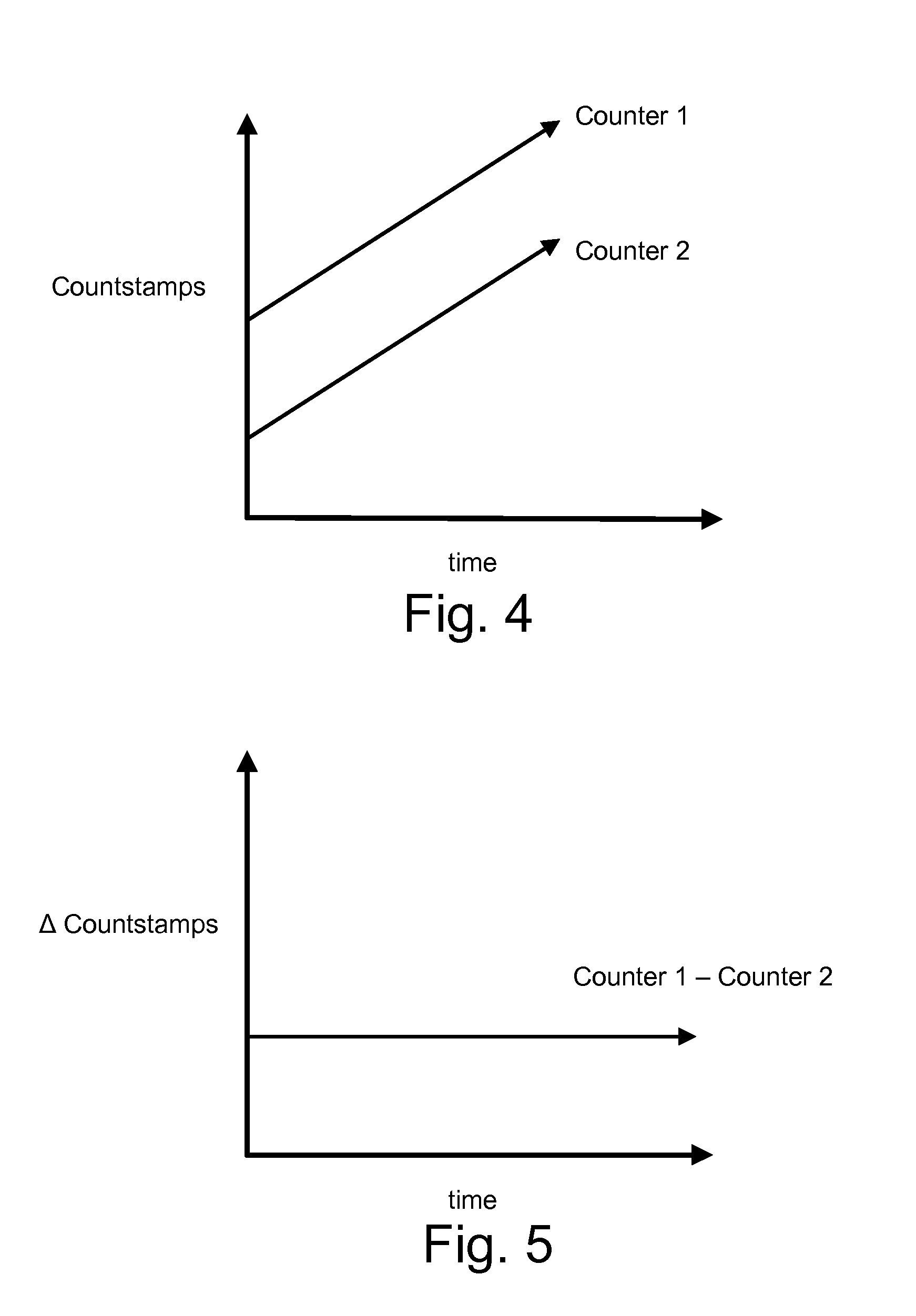Positioning systems for wireless networks
- Summary
- Abstract
- Description
- Claims
- Application Information
AI Technical Summary
Benefits of technology
Problems solved by technology
Method used
Image
Examples
case b
ed Pings from One or More Mobile Devices in Previous Pung Packet
[0207]1. Are there new (expected) pings from the mobile device in this slot the last tx pung (0 or 1)?[0208]a. If ‘1’ continue to step 2[0209]b. If 0, repeat 1 while there are slots for remaining previously transmitting mobile devices. Otherwise, go to step 5.[0210]c. If we believe that the mobile device has stopped transmitting by virtue of some critical number of non-received pings reached, the slot for this mobile is deleted and the remaining mobile slots move up the list to occupy its place next pung[0211]2. Binary string that is the length of the additional number of pings from the mobile that the receiver expects to receive in this harmonic block[0212]3. Set of differences relative to presumed mobile transmission schedule that the network node receives, if applicable ([0213]4. Continue steps 2-4 while there are remaining expected previous mobile slots. Then go to step 5.[0214]5. Pings from a new mobile (0 or 1)?[0...
PUM
 Login to View More
Login to View More Abstract
Description
Claims
Application Information
 Login to View More
Login to View More - R&D
- Intellectual Property
- Life Sciences
- Materials
- Tech Scout
- Unparalleled Data Quality
- Higher Quality Content
- 60% Fewer Hallucinations
Browse by: Latest US Patents, China's latest patents, Technical Efficacy Thesaurus, Application Domain, Technology Topic, Popular Technical Reports.
© 2025 PatSnap. All rights reserved.Legal|Privacy policy|Modern Slavery Act Transparency Statement|Sitemap|About US| Contact US: help@patsnap.com



